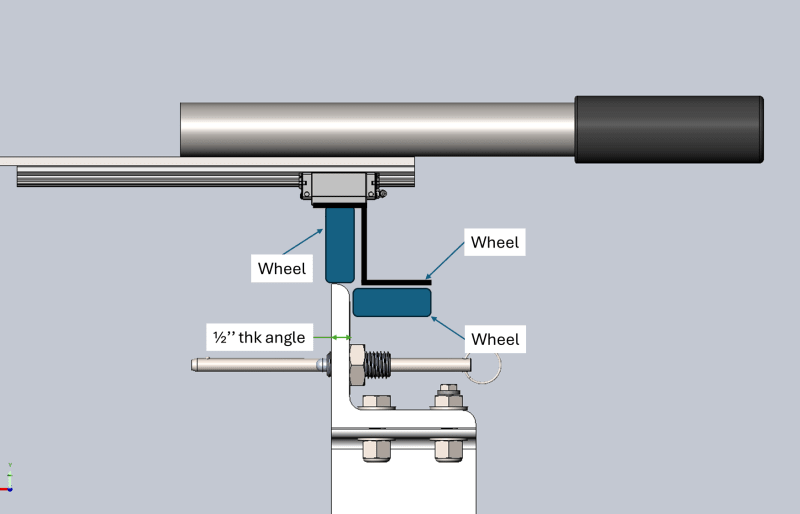Cilasefi7
Automotive
- Sep 7, 2023
- 11
Hi guys,
I want to move a fixture that's 100 pounds forward and back (back and forth) on 1/2'' angle rails.
Do you know of any flange wheels or have suggestions on what wheels to use for my application?
Please see attached sketch of my application, black is a bracket that I plan to mount my wheels to, green are the wheels.
I'm looking for a mechanism to guide the fixture, that's why I put a set of perpendicular wheels, right hand shown only.
I'm considering some type of wheels with flanges or maybe v-groove wheels that can sustain a load of 100-200 lbs.
Any input?
Thank you,

I want to move a fixture that's 100 pounds forward and back (back and forth) on 1/2'' angle rails.
Do you know of any flange wheels or have suggestions on what wheels to use for my application?
Please see attached sketch of my application, black is a bracket that I plan to mount my wheels to, green are the wheels.
I'm looking for a mechanism to guide the fixture, that's why I put a set of perpendicular wheels, right hand shown only.
I'm considering some type of wheels with flanges or maybe v-groove wheels that can sustain a load of 100-200 lbs.
Any input?
Thank you,


